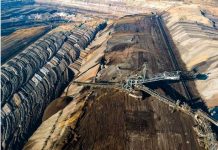Editor’s Note: Today’s OGIB is the transcript of my recent interview with Peter Byrne of The Energy Report (TER) on a growing debate in North America’s Great Experiment: the Shale Revolution, and I also talk about which junior producers I’m keeping close tabs on right now in the oil patch.
————————————
The Energy Report: A number of experts say North American gas supply is peaking. Where do you weigh in?
Keith Schaefer: During the last three years, the mantra has been, “Drill, baby, drill,” for a number of reasons. The price of gas was never one of those reasons. Companies drilled because the technology kept improving. They drilled because they were able to get cheap foreign capital to partner in joint ventures. The market situation was not based upon economic “truth.” It was based on securing the land position and, “Economics be damned, let’s go!” But we are now returning to a real gas market based upon economic fundamentals. Where that’s going to shake out, nobody knows; the market is betting on higher prices.
The reality is, Peter, there is only one true gas formation in the U.S. that is increasing production, and that’s the Marcellus. Every other single shale gas play is now in decline. The industry is now much more disciplined in producing gas, as the rig count has gone way down. But I suggest that the price rise is a year or two away because there is so much gas drilling going on in the Marcellus and Eagle Ford. These two formations are making up the shortfall in other regions. At some point in time—nobody really knows when—the scales are going to tip: Gas production in North America will seriously decline. The gas bulls think it’s going to happen quickly, because the hydraulic fracking wells come in like gangbusters and then rapidly decline. An overall decline in supply could drive up the price.
The Energy Report: Are there undeveloped or undiscovered shale gas plays still out there?
Keith Schaefer: The short answer is that we do not know. Explorers are testing new areas. Just outside the Bakken, there is activity in Bowman County. There is play in the Heath Shale. It looks like the Utica will be mostly gas, not oil. But I don’t see any more Marcellus Shales out there.
The Energy Report: Is there a limit to exploration?
Keith Schaefer: All of the easy fruit has been picked. Remember, most of the shale plays were already well known geology, so everybody knew where the oil and gas was. We just did not have the technology to get the stuff out of the ground. As the technology has improved, bit by bit, and the politics has improved, bit by bit, the known shale plays are being developed to capacity. Is there another undiscovered giant like the Marcellus lurking somewhere? Realistically, I doubt it. The industry has very good tools for looking underground. A big monster shale play that would keep the gas glut going for another two or three years is a bit of a stretch.
The Energy Report: Will we go back to importing gas?
Keith Schaefer: I do not see the U.S. importing much gas for at least three years, and maybe longer, depending on existing wells’ decline rates. Right now, drillers are doing maybe four wells per square mile. With downspacing, they can get down to 8, 16 or even 32 wells per square mile. There is still a lot more domestic gas to be pumped before we need to import a lot of gas again.
The Energy Report: Let’s talk about the role of Canadian penny stocks in your portfolio. How is the shale experiment with the oil juniors going in Canada?
Keith Schaefer: All across North America and especially in Canada, the rush into shale oil has been a great experiment. But it really doesn’t work in a junior company. The place for juniors in an investor’s portfolio right now is getting smaller and smaller. The shale, or tight wells cost a lot of money to drill, and the juniors just do not possess the capital necessary to develop many of these plays. The wells will pay out in 12–24 months, and that is simply not fast enough for the junior companies to recycle the cash and drill another well. A junior might have a big land position, but it cannot develop it, particularly on the gas side, without continually raising equity. Many of these companies have stopped or dramatically reduced drilling. It’s a bad spiral: You drill less, you produce less and your declines are high. These smaller energy firms are in a really tough spot—for oil or gas.
The Energy Report: Is it reasonable for the management of these struggling companies to hope the price will go up and make staying the course worthwhile?
Keith Schaefer: Well, yes, they have no choice other than shutting down all of their production. It’s just a question of how long the wait is. I was talking with a producer the other day, and he indicated that there will be no new capital available for pure dry gas until it is hedged at $4.50/thousand cubic feet ($4.50/Mcf). Gas has to be at $5/Mcf for a couple of weeks for them to do that. So gas prices have to be $5/Mcf for the market to realistically think about putting more money into dry gas wells.
Could that happen this year? It could, but the Marcellus is still coming on strong. Next year is quite possible. The other thing is that the gas wells with lots of natural gas liquids (NGL) like condensate, propane, butane and ethane have better economics than simple dry gas wells. With NGLs, more production can come on-line at $3.50/Mcf. There is hope; prices are moving higher than most people expected at this time of year, thanks to a very cold early spring. But to say that prices will go much higher from here would be a bit of a stretch.
The Energy Report: Which junior names are doing well in Canada?
Keith Schaefer: In no particular order, NuVista Energy Ltd. (NVA:TSX), Advantage Oil and Gas Ltd. (AAV:NYSE; AAV:TSX) and Delphi Energy Corp. (DEE:TSX) are doing well. The market is watching these companies to see which has leverage to gas, and which can really show a huge improvement in its numbers if gas does go up. These companies are heavily gas weighted. So, if gas does turn and stay higher, they have the most torque.
[To read the rest of this interview, click here for the full version on The Energy Report’s web site.]








